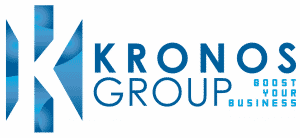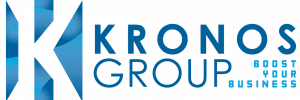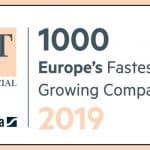Understanding the procure-to-pay cycle and its yields for stakeholder satisfaction

Summary
The procure-to-pay cycle is crucial for maintaining a smooth flow of processes. Procure-to-pay is the alignment of procurement and purchase management, which leads to increased efficiency, better cash flow management, better compliance, and more transparency and accountability, which builds satisfaction across all stakeholder groups. In this blog, we discuss the role of procure-to-pay and its necessity in procurement processes. We shed light on the procure-to-pay cycle and its movements and the stakeholders who benefit from businesses adopting a procure-to-pay system. Finally, we discuss how procurement consulting and procure-to-pay systems can result in better decision-making and achieve stakeholder satisfaction.
Procure-to-pay is the integration and connectivity between procurement and purchasing. A procure-to-pay system fully relies on the automation of the purchasing process to secure resources for business functions and processes. Simply, this refers to a streamlining of the payment process which synchronises the purchasing and payables departments.
Procure-to-pay is a relatively new concept and is also known as P2P, purchase-to-pay, e-procurement, or req-to-cheque.
The role of procure-to-pay
The procure-to-pay cycle is crucial for maintaining a smooth flow and binding of processes. Procure-to-pay ensures that organisations benefit from a smooth allocation of resources and assets, whilst managing costs and maintaining strong stakeholder relationships and bonds. The procurement process can lead to cost savings, improved efficiency, and better compliance with company policies and external regulations.
The procure-to-pay cycle and its movements
A procure-to-pay cycle follows a variety of movements before it reaches the stage of payment processing. A procure-to-pay cycle details purchasing, monitoring, analysing, sourcing, stakeholder management, requisition, and payment.
Procure-to-pay systems cover 4 main stages:
- Procurement
- Purchase
- Acquire
- Payment
These four stages have segments that are broken down into seven vital parts that build up the foundation of a procurement process.
The 7 stages of a procure-to-pay cycle are:
Step 1: Identification of business needs and resources that yield the right quality and quantity for final products and services
Step 2: Requisition and approval to facilitate a fair allocation of assets and business resources for the purchase order management
Step 3: Once the requisition is approved by the relevant department, the purchase order is issued and released to the supplier
Step 4: When the goods or services are delivered, a quality check is done. Based on the outlook, the sales receipt is issued
Step 5: When the supplier’s invoice is paid out and entered into the payment processing system, the net liquidity is calculated
Step 6: The invoice is ruled out against the purchase order; this is a cross-checking and reassurance of purchase and payment
Step 7: This is when invoices are approved and passed over to the accounts payable to make the payments and update the systems
The benefits of procure-to-pay systems
All stakeholders benefit from procure-to-pay systems because they aid in smoother operations, allow fewer opportunities for miscommunication, increase potential to achieve business objectives, and safeguard business reputation and image.
A procure-to-pay system allows businesses to benefit from:
- Prioritising time management
- Improving financial controls
- Widening stakeholder bases
- Enabling seamless processes
- Reducing errors through automation
- Offering simple and manageable processes
- Prioritising financial control and financial solvency
- Adopting risk management strategies, enhancing compliance
- Pushing transparency and accountability throughout processes
- Building up flexibility and accessibility that cater to the global arena
- Improving the pace of processes, scalability, and usability of procure-to-pay process
The stakeholders that benefit from procure-to-pay systems
There are many stakeholders who benefit from the above-mentioned advantages:
- Entrepreneurs: Procure-to-pay systems benefit entrepreneurs through transparency, easy lines of communication, and simpler processes that prioritise time management; this allows businesses to allocate time for less monotonous tasks and focus on decision-making processes. 45.1% of firms see procure-to-pay as a vital component in the management sector.
- Employees: 22% of an employee’s time is spent on repetitive and monotonous tasks; this way, employees can focus on ways to enhance processes, productivity, and efficiency. Integrated systems are likely to maintain consistent quality in processes. This way, it reduces errors and miscommunication within the organisation.
- Suppliers: Procure-to-pay systems adopt a nature of transparency and visibility for records of data and a clear line of communication, so suppliers can rely on firms to be prompt with payments and reorders.
- Consumers: Procurement systems indirectly benefit the consumer as there is data-backed purchasing that fits the needs and demands of the consumer, with lower mistakes and wastage. This allows a business to mitigate high costs and pass this benefit over to consumers in the form of a competitive advantage.
Implement a procure-to-pay system that yields stakeholder satisfaction
Implementing procure-to-pay systems is a strategic decision taken by businesses and is now proven to be vital to facilitate a competitive advantage, grow consumer demand, and increase stakeholder satisfaction.
For the right implementation of a procure-to-pay system, consider procurement consulting for better business processes and stakeholder management.




